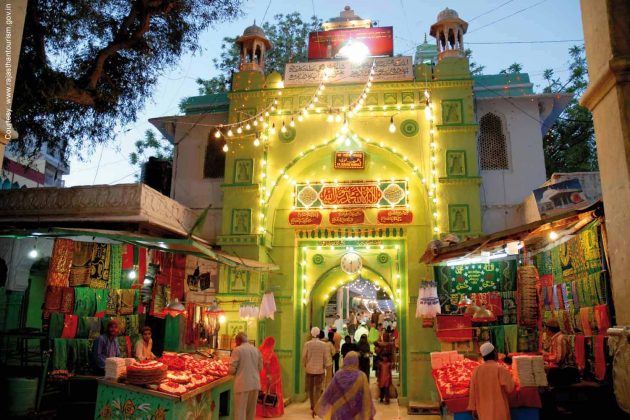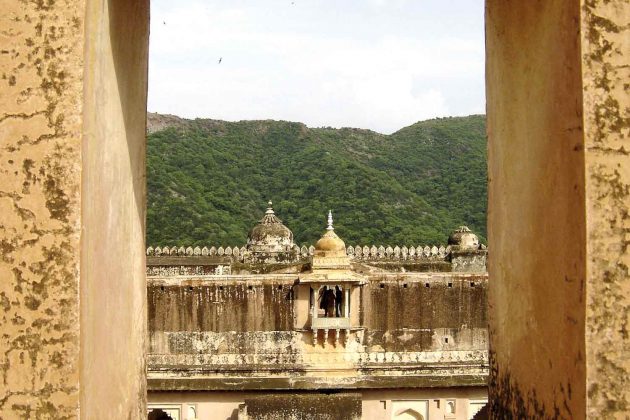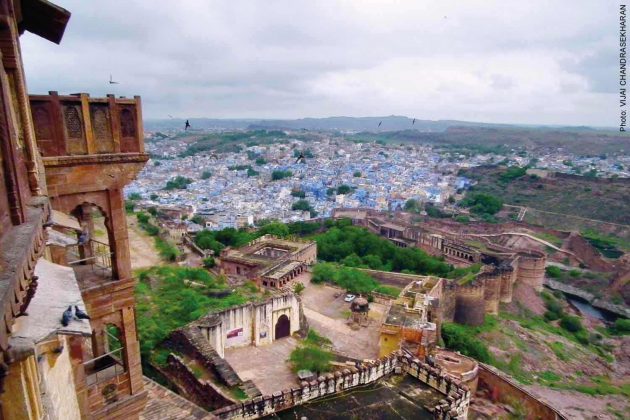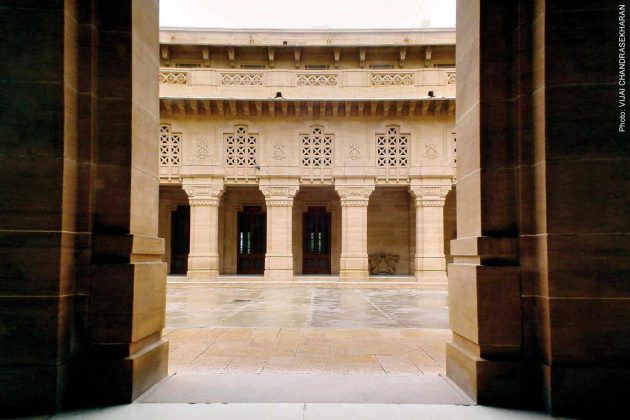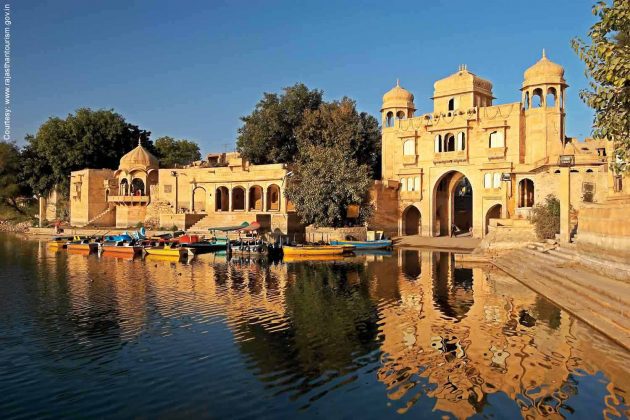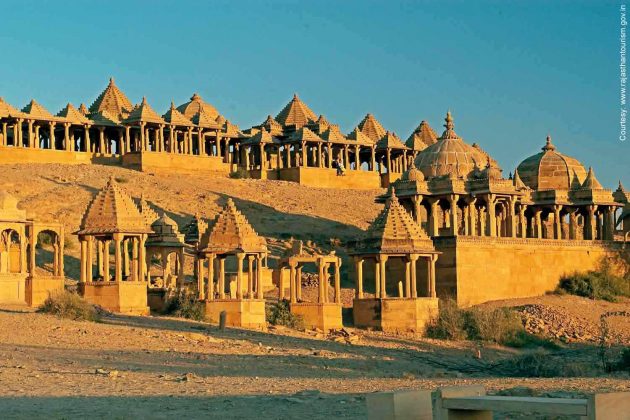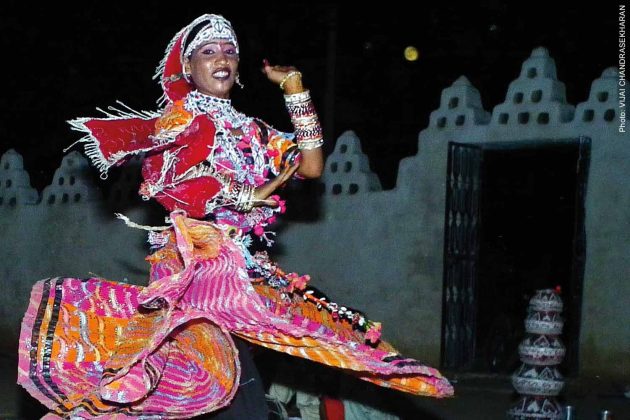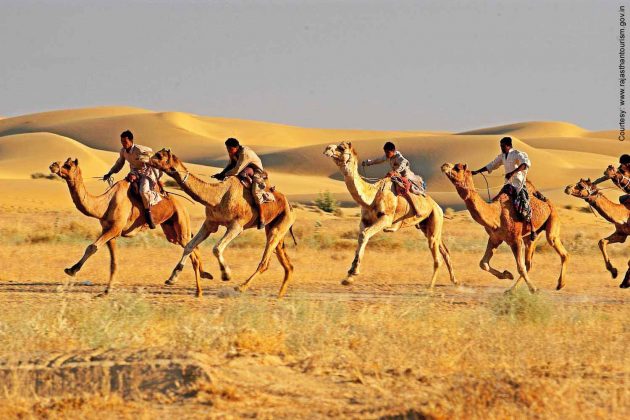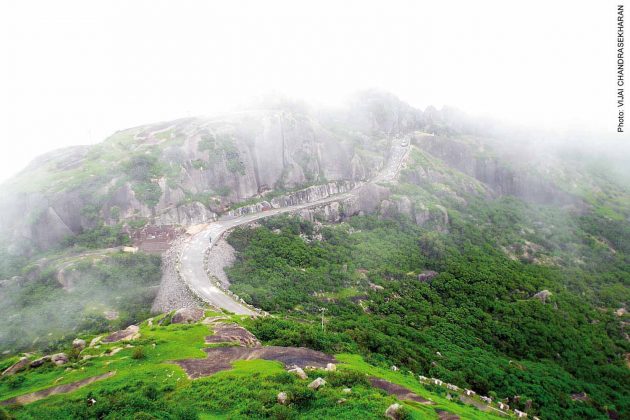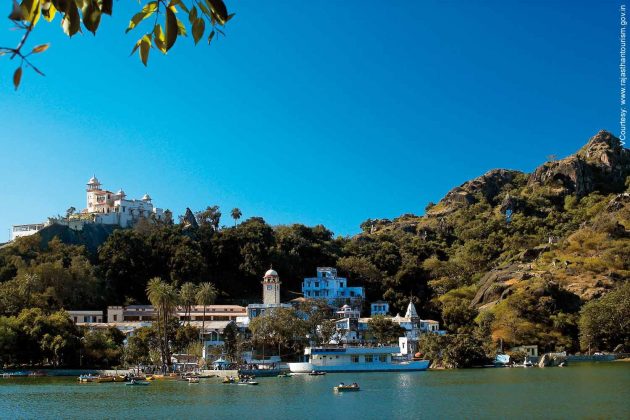Our plans started taking shape sometime in late July. Seven of us met to decide on a holiday destination, something that invariably never saw the light on previous attempts. We set a date in mid-August for our travel plans. Bangkok was temporarily banished, Sri Lanka lurked in uncertainty, North-East was laid to rest and South India was left for the Gods to sort out! As if predestined, we unanimously settled for a grand road trip across the majestic state of Rajasthan.
Rajasthan is best explored on foot. Since that is unlikely, the next best option is to drive. But save your rallying spirits for another day and hire a local vehicle with a driver [they’re cheaper than their urban counterparts]. Since the driver also doubles up as a guide, you’re insured against taking a wrong route, which may not be such a bad thing if you’re in the vicinity of local markets. But when you hit those long stretches of asphalt that connect adjoining cities, you don’t want to find yourself meandering for hours across barren lands.
We decided to restrict ourselves to the inner tourist circuit of this large state [Jaipur-Ajmer- Jodhpur-Jaisalmer-Udaipur-Jaipur] and avoid moving along the outer perimeter as it would have made the journey arduous. Covering these important cities gave us more than just a glimpse into the heart of Rajasthan, its art, culture, monuments, cuisine, people, way of life, while offering enough opportunities for the culture shopaholic as we drifted from one historic city to the other.
Jaipur
We got our first delicate taste of Rajasthan as we landed at the Jaipur airport, which resembled a library, if you consider the quietude, cleanliness and sparse population!
Popular by its Pink City tag, Jaipur is the largest city and the capital of Rajasthan. History tells us that the city was bathed in terracotta pink to welcome British royalty. Be as that may, always finding yourself in the pink of health in this magnificent city is a notion I’d want to subscribe to more dearly. The city is a handsome blend of Rajput and Mughal architecture and took over four years to build. It was the outcome of an ambitious plan of Maharaja Sawai Jai Singh who decided to move his operations from Amer, the former capital city.
We hired a mini van, apparently the only comfortable option for a group of seven with sufficient luggage, which eventually proved to be quite the perfect mode of travel. Travelling on the city’s noticeably wide roads offers inner peace, a quality that escapes us admirably in the more famous metropolitan cities. What is even more heartening is the level of cleanliness that the city prides itself on.
A short drive from the airport, we checked into our hotel, which definitely didn’t make the A-list in luxury, but offered large rooms and sweet little services that we came to appreciate later. A healthy banter post dinner, and a bit of moon-gazing later, we hit the sack preparing ourselves for our big road trip the next day.
Ajmer
Reserving our Jaipur sightseeing for the last leg of the journey, we left for Ajmer the next morning, which is equidistant from Jaipur as well as Jodhpur, our next destination. Surrounded by the Aravalli range of mountains, Ajmer is home to the shrine of Khwaja Moinuddin Chishti, who is highly revered among Muslims. A visit to the dargah is something most tourists undertake and is supposed to bring about inner peace and oneness with Allah. About 11km from Ajmer is Pushkar, an important Hindu pilgrim destination—Pushkar lake and Brahma temple are the biggest attractions here. Even though these places may not seem
to have been maintained well, there is no denying the sense of spirituality you can feel in the air, breathe into your lungs, and replenish your soul with.
Jodhpur
A short spiritual experience underway, we continued to the princely city of Jodhpur. After pink, it was time to witness the magic of pastel blue! A view from Mehrangarh fort captures this perfectly—flat roofed houses painted in bright blue that earned the city its nickname, the Blue city. Long known for its flourishing trade in footwear, copper, date palms and coffee, Jodhpur has burgeoned into a tourist hub in recent years. The city also conducts various cultural fairs and festivals that have long become major attractions for travellers from across the globe. Although not as diverse as Jaipur, which boasts of many incredible monuments and architectural marvels, Jodhpur does offer enough sightseeing value. If you can customise your itinerary, do reserve a sizable chunk for exploring Umaid Bhawan Palace [and the museum], one of the most luxurious private residences in the world today.
Since we were pressed for time, we didn’t linger for long and decided to proceed to Mehrangarh fort for a historical lesson like no other. I recommend opting for the tour guide for not just the history but some interesting trivia. Take a tour along the perimeter of the majestic fort and walk through its wide courtyards; you’ll even get to see imprints of cannonball hits on the walls.
I’d encourage anyone with a historical bent to visit the museum inside, which houses a number of period rooms [sections maintained as they were from eras gone by], classic items of armoury, rich paintings, bejewelled palanquins, gallery of music instruments, and a vast treasury room.
As you walk through the once hallowed halls, closely examining the architecture, artefacts and paintings, reliving the past through them, you may as well hear the banter of courtesans, the pitter-patter of loyal subjects, the tinkling of bells around heavily embellished elephants, as royalty is ushered in through majestic gates.
A short drive from the fort is Jaswant Thada, the main monument, a cenotaph built out of delicately carved marble. A place so tranquil and serene, one could spend contemplative hours just surveying the horizon. After a brief walk-through and then providing an audience to a folk singer, we paid our respects to this magnificent landmark, and proceeded to our next stop, the city of Jaisalmer.
Jaisalmer
Rajasthan redefines roadside food. Unlike in the suburbs, where such an indulgence can easily relegate you to hospital beds, dhabas that dot the highways serve some of the most nutritious and tasty food you will ever sample. Even die-hard meat eaters will give respite to their normal indulgences and wilfully feast on an assortment of pulses, gram, soft hot rotis and unique vegetable preparations that will prove to be finger-licking good.
Some time in the late afternoon, we checked into Nachana Haveli, our pit stop at Jaisalmer. A couple of hours later we would head to the deserts, and the much-awaited camel safari. There are quite a few desert ride operators to choose from and it is advisable to check what’s on offer beforehand. Our
operator offered us camel rides [Khuri desert camp] followed by a cultural music and dance show with traditionally cooked dinner, which eventually proved to be a high point in our holiday.
For all the adrenalin rush and adventure that quad-biking, kart racing or a jungle safari has to offer, a desert ride on a camel hump is something else! And after the camel ride, do not be in a hurry to get back, sit for a while on the sand dunes and just soak in the gradually extinguishing embers of the sunset. Quiet winds sweeping across the sand dunes remind you of a mystical era gone by, and somehow still stuck in time.
Mount Abu
The most arduous journey that awaited us was from Jaisalmer to Udaipur. Although Mount Abu wasn’t originally part of our itinerary, there was little that we could do as we passed through, our senses getting completely overwhelmed by the welcome change in climate, idyllic townsfolk and the idea of climbing Guru Shikhar, the highest point of the Aravali mountain range in Rajasthan. We checked into our hotel around midnight, and in spite of the late hour, were graciously welcomed at the reception with some hot tea brewed for us. Nothing beats timely hospitality!
Located about 15km from Mount Abu, the morning drive to Guru Shikhar was an invigorating one. Vehicles have to be parked at the base of the temple of Dattatreya, and from there it’s a short but winding and moderately steep climb right up to the top. Ringing the large brass bell of the temple is quite an achievement in body, spirit and mind. While on top, you can survey the lush greenery of Abu, the continuous mist blanketing parts from clear view, painting nothing short of a heavenly picture.
Udaipur
After gorging on daal-baati-churma and an assortment of local cuisine, we proceeded towards Udaipur. Since we had altered our itinerary by stopping at Mount Abu, we had to make new reservations for our hotel at Udaipur. And as if preordained, we checked ourselves into one of the finest hotels that offered us the best hospitality ever. Mahendra Pratap palace is a family-run haveli-style hotel that is well within walking distance of local markets and important sightseeing venues. We were lucky to have engaged in conversation with the Lady of the family who personally looks into every aspect of running the hotel. I forget her name, but she has to be one of the most elegant, charming and beautiful ladies I have ever interacted with. All of us felt the same way! Although the hotel offered a cosy in-house restaurant experience, we chose to dine that night at a nearby hotel, which offered a splendid view of the Udaipur Taj hotel—a sight not to be missed.
Back to Jaipur
We did some shopping the morning after, and then set out to complete the last leg of our journey back to Jaipur. After a rather gruelling long drive, we checked into the same hotel at Jaipur, dozed for a while, had our evening tea and then set out to visit what is arguably one of the most popular attractions in Rajasthan, the famed Chokhi Dhani.
Chokhi Dhani is a huge resort situated on the outskirts of Jaipur. Spread over 22 acres, it’s a small city in itself and nothing like you’ve ever experienced before. Don’t be surprised if you find yourself at the long end of a queue at the main entrance on particular nights as this is an important must-do for many tourists visiting Jaipur. Themed around various traditions and characteristics of village life, the resort offers a peek into Rajasthan’s rural art forms, culture, customs and traditions. The resort also provides accommodation for the night, and you can opt from a village style or five-star experience that includes royal cottages, haveli suites, banquets and spa facilities.
Tourists are known to visit just for a taste of authentic Rajasthani food, now famous the world over. When on a holiday, it is advisable to keep this as the last attraction of the day, because after a multi-course dinner, you will find yourself so full and utterly satisfied, that you wouldn’t want to do anything else, except linger in the experience till you drift off to sleep.
Our journey now coming to an eventful end, we packed our bags for the airport the next afternoon, visibly sad that we were leaving behind so much that had become part of us, these last few days. There is no denying the profound effect this journey has had on me. Months have gone by, but the memory still lives, and vividly.
The grand architecture, places steeped in historical significance, the grandeur of an era gone by but still living within the walls of its cities, the rich and varied cuisines, the remarkable colours, the happy-go-lucky yet proud of their heritage populace—for the discerning or laid-back traveller, Rajasthan will admirably always make for an august proposition.
Chuck the ordinary
Throughout our journey, we routinely chanced upon people sitting on top of vehicles, waving as they passed us by. The over-enthusiastic among us suggested we emulate them and after a brief powwow, some of us decided to clamber on to the top of our tempo traveller to experience what it was like. The feeling is indescribable! The wind blowing in your face, a clear and smooth road straight ahead, we experienced something that we seldom do in other cities. By far, it was one of the best rides that we’ve ever undertaken!
Slow down
The sole objective of a vacation is to travel and take in the experience at an easy pace, and when it comes to a state like Rajasthan, you must slow down even more, sometimes even come to a grinding halt. Stop at crossroads, talk to locals, get interested in their lives. One of us even made rotis at a road-side dhaba! Such encounters and indulgences help enrich life and give a sense of satisfaction that has a profound effect on one’s overall wellbeing.
See and do
Jaipur: The Jantar Mantar observatory, the famed Hawa Mahal, Jaigarh and Amer fort, and Chokhi Dhani—especially if you are a devout vegetarian/thali aficionado.
Ajmer/Pushkar: The dargah, the temple if you are spiritually inclined; Merwara Palace hotel for a sumptuous meal.
Jodhpur: Umaid Bhawan Palace, Mehrangarh fort is a must—just the view from the top overlooking the flat blue houses below is worth the visit. Jaswant Thada—a mausoleum built in memory of Maharaja Jaswant Singh.
Jaisalmer: Khuri village, sand dunes and camel ride—opt for a cultural musical night. Other places to see: temple complex within Jaisalmer fort.
Mount Abu: Guru Shikhar, the highest point above sea level, a great city to just drive through.
Udaipur: Udaipur City Palace, Badi Mahal [Garden Palace], Jagadish chowk, Mewar festival [March/April], Monsoon Palace [Sajjan Garh], which is a residential palace overlooking lake Pichola.
Note: Look up these places on the internet for detailed historical significance and tourist information.
This was first published in the April 2012 issue of Complete Wellbeing.




